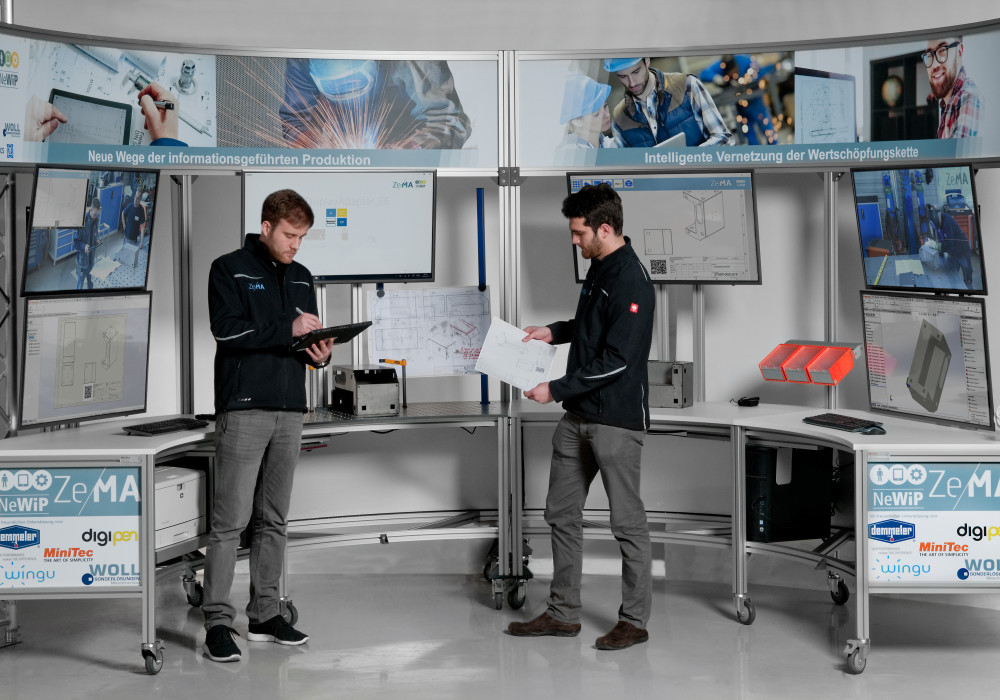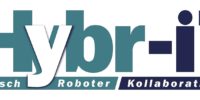Hybr-iT
Problem definition and objectives
The aim of the project is to establish and industrially test hybrid teams. These teams consist of humans, robots, software-based assistance systems and intelligent, virtual environments. From an IT point of view, they are highly distributed overall systems with very different IT and cyber-physical subsystems, i.e. plant and robot control systems, safety, logistics, database, assistance, tracking, simulation and visualisation systems etc., which must be connected with each other with sufficient performance for the intended collaborative use in production.

An essential component and scientific challenge for the deployment of hybrid teams is therefore a comprehensive resource-oriented architecture (ROA) for the connection of heterogeneous cyber-physical systems and IT environments. With the help of largely standardised interfaces and well-defined data models, this architecture allows a dynamic connection of all necessary subsystems (IT environments, cyber-physical systems and multimodal interaction and control hardware) as well as their individual further development. For the resource-oriented architecture (Figure 1), a secure and real-time capable communication layer is also indispensable.
Procedure
In addition, a software architecture for the robots themselves is needed that interacts seamlessly with the ROA and uses the robot control information for hybrid teams. This architecture abstracts from the used hardware and allows the robot independent use of the developed algorithms. Due to the interaction of the ROA and the robot architecture, IT environments and robots can thus be connected independently of manufacturers.
In order to keep all IT and cyber-physical subsystems involved synchronous and consistent, a real-time-capable, adaptive, semantic data and environment model is additionally needed, which contains all information required by other subsystems and can be updated by both the ROA and the robot architecture. A further elementary prerequisite for workers and robots working very closely together and in flexible task areas is a worker recognition system that is reliable, as precise as possible and comprehensive, working in real time under very different production conditions and also with a changing workforce. To avoid time-consuming set-up times and possible disturbing markers, markerless tracking approaches will further be developed so that they function well and precisely in industrial environments.
For the implementation of direct human-machine interaction, i.e. communication between humans, robots and assistance systems, multimodal dialogue systems are required which can operate both existing input and output channels (e.g. switches, screens, sound signals etc.) and newer possibilities such as voice interaction, gesture recognition and haptic feedback. These dialogue systems will access both the robot architecture and the ROA.

